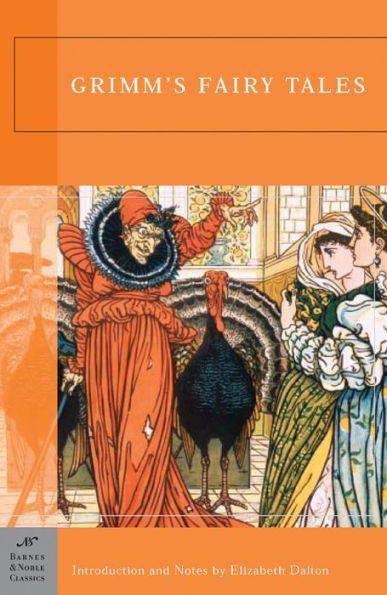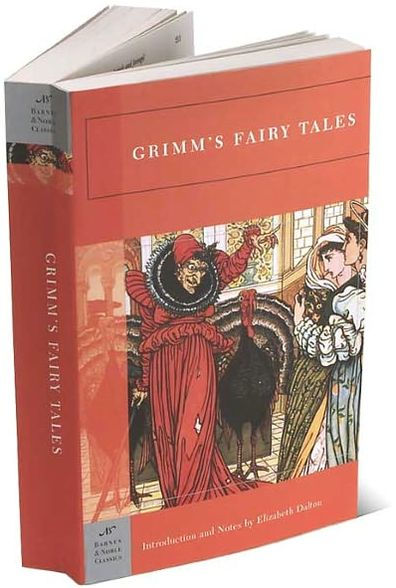- New introductions commissioned from todays top writers and scholars
- Biographies of the authors
- Chronologies of contemporary historical, biographical, and cultural events
- Footnotes and endnotes
- Selective discussions of imitations, parodies, poems, books, plays, paintings, operas, statuary, and films inspired by the work
- Comments by other famous authors
- Study questions to challenge the readers viewpoints and expectations
- Bibliographies for further reading
- Indices & Glossaries, when appropriate
With the words “Once upon a time,” the Brothers Grimm transport readers to a timeless realm where witches, giants, princesses, kings, fairies, goblins, and wizards fall in love, try to get rich, quarrel with their neighbors, and have magical adventures of all kinds—and in the process reveal essential truths about human nature.
When Jacob and Wilhelm Grimm set out to collect stories in the early 1800s, their goal was not to entertain children but to preserve Germanic folklore—and the hard life of European peasants was reflected in the tales they discovered. However, once the brothers saw how the stories entranced young readers, they began softening some of the harsher aspects to make them more suitable for children.
A cornerstone of Western culture since the early 1800s, Grimm’s Fairy Tales is now beloved the world over. This collection of more than 120 of the Grimms’ best tales includes such classics as “Cinderella,” “Snow White,” “Hansel and Grethel,” “Rapunzel,” “Rumpelstiltskin,” “Little Red Riding Hood,” and “The Frog Prince,” as well as others that are no less delightful.
Elizabeth Dalton is Professor of English and Comparative Literature at Barnard College. She has published fiction and criticism in The New Yorker, Partisan Review, Commentary, and The New York Times Book Review.
- New introductions commissioned from todays top writers and scholars
- Biographies of the authors
- Chronologies of contemporary historical, biographical, and cultural events
- Footnotes and endnotes
- Selective discussions of imitations, parodies, poems, books, plays, paintings, operas, statuary, and films inspired by the work
- Comments by other famous authors
- Study questions to challenge the readers viewpoints and expectations
- Bibliographies for further reading
- Indices & Glossaries, when appropriate
With the words “Once upon a time,” the Brothers Grimm transport readers to a timeless realm where witches, giants, princesses, kings, fairies, goblins, and wizards fall in love, try to get rich, quarrel with their neighbors, and have magical adventures of all kinds—and in the process reveal essential truths about human nature.
When Jacob and Wilhelm Grimm set out to collect stories in the early 1800s, their goal was not to entertain children but to preserve Germanic folklore—and the hard life of European peasants was reflected in the tales they discovered. However, once the brothers saw how the stories entranced young readers, they began softening some of the harsher aspects to make them more suitable for children.
A cornerstone of Western culture since the early 1800s, Grimm’s Fairy Tales is now beloved the world over. This collection of more than 120 of the Grimms’ best tales includes such classics as “Cinderella,” “Snow White,” “Hansel and Grethel,” “Rapunzel,” “Rumpelstiltskin,” “Little Red Riding Hood,” and “The Frog Prince,” as well as others that are no less delightful.
Elizabeth Dalton is Professor of English and Comparative Literature at Barnard College. She has published fiction and criticism in The New Yorker, Partisan Review, Commentary, and The New York Times Book Review.

Grimm's Fairy Tales (Barnes & Noble Classics Series)
560
Grimm's Fairy Tales (Barnes & Noble Classics Series)
560

Product Details
| ISBN-13: | 9781593080563 |
|---|---|
| Publisher: | Barnes & Noble |
| Publication date: | 11/01/2003 |
| Series: | Oz Series |
| Pages: | 560 |
| Sales rank: | 109,373 |
| Product dimensions: | 5.30(w) x 7.96(h) x 1.45(d) |
| Age Range: | 8 - 12 Years |



